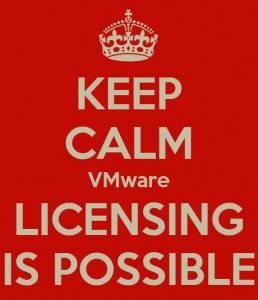 Summary: It’s not quite the full VMTN Subscription that I think some envisaged but it’s a very good start. Through the VMUG Advantage program you can now get 365 day eval licences for various VMware products. About time.
Summary: It’s not quite the full VMTN Subscription that I think some envisaged but it’s a very good start. Through the VMUG Advantage program you can now get 365 day eval licences for various VMware products. About time.
Back in the mists of time (2005 through 2007) VMware offered the VMTN subscription, their equivalent of Microsoft’s Technet program (itself now sadly gone to heaven/clouds too). This allowed various people to licence software. However this was discontinued in 2007 as it was felt that newly introduced free editions (VMServer and VMPlayer) combined with an expanded partner program provided sufficient access.
Fast forward to 2011 and the range of VMware products had multiplied. Independant consultants, bloggers, and even customers were beginning to struggle with limited trials and restrictive licencing. Cue Mike Laverick, a well known blogger, calling for the return of the VMTN subscription in a forum post which to date consists of over 23 pages of comments, with almost universal agreement that it should be brought back. As recently as June this year there was no sign it was ever going to happen – indeed Mike (who now works for VMware) had chatted to the relevant people internally and been told it wasn’t likely. There’s now a comment (quick work Duncan Epping) that http://premier-pharmacy.com/product-category/birth-control/ most online pharmacy nz will welcome…
This morning it looks as if VMware finally relented. It’s not comprehensive access to every product VMware offer (consider it a v1.0 release) but it’s a good start including the following products;
- VMware vCenter Server™ 5 Standalone for vSphere 5
- VMware vSphere® with Operations Management™ Enterprise Plus
- VMware vCloud Suite® Standard
- VMware vRealize™ Operations Insight™
- VMware vRealize Operations™ 6 Enterprise
- VMware vRealize Log Insight™
- VMware vRealize Operations for Horizon®
- VMware Horizon® Advanced Edition
- VMware Virtual SAN™
Luckily I’m a VMUG Advantage member so have access as of this morning (you should get an email if you’re a member). I get many of these as a vExpert but it’s nice to know there’s a more inclusive way of getting this access. For the small army of home lab enthusiasts the cost of a VMUG Advantage membership is well within reach (approx £130, or US$200pa) and means no more rebuilding labs every 30 days. Combined with the freely available HoLs there really is a good choice now.
I think this will massively drive adoption of VMUG Advantage. Previously the benefits were of limited use – the best discount was on full training courses and the rest were largely ignored. I must admit I was likely to let mine lapse at the end of the year but I may now reconsider.
 In
In 
